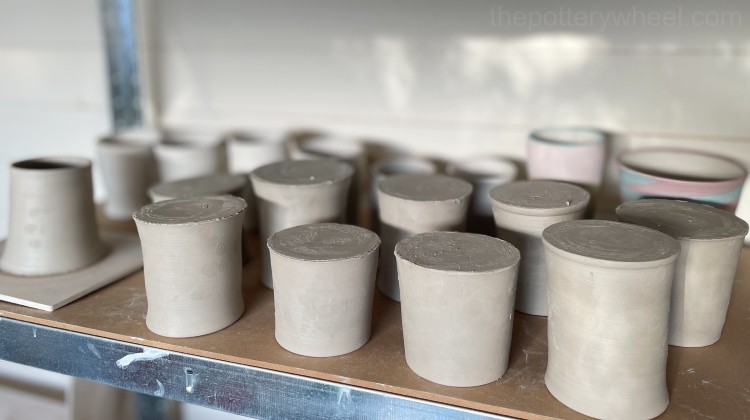Your cart is currently empty!
Lesley
-

12 Reasons Why Clay Goes Off-Center When Opening
We have all been when we are learning to throw. We are sure that the clay is centered. It’s looking good and it feels smooth and even. Then moments later your pottery is wonky and bumping around beneath your fingers. So, what is going on? Why does clay go off-center? and what can you…
-

How Long Does it Take for Pottery Clay to Dry?
When you’ve worked hard on a piece of pottery, you want it to survive the drying process. You may have been told to dry your pots slowly so they don’t crack or warp. But how slow should you go? And how long does it take for pottery clay to dry? Pottery clay usually takes about…
-

What is Grog in Pottery?
You may have noticed that some clay bodies contain something called grog. But what is grog in clay and why is it important when we make pottery? Grog is a gritty material that gives the clay strength which can make it easier to throw and hand build. It reduces clay shrinkage and cracking which makes…
-

How To Recycle Clay – Easy Ways to Reclaim Clay Scraps
Whether you hand build with clay or wheel throw, you are going to generate some clay scraps. But is clay recyclable? The answer is yes, clay scraps can be recycled and do not need to go to waste. Here is a step-by-step guide on how to recycle clay. There are lots of different ways of…
-

How to Prepare Clay for Pottery
Learning how to prepare your clay for pottery will make your life as a potter much easier. A few simple steps to get your clay ready can save you hours of frustration going forward. Preparing clay for pottery involves making sure the clay is moist but not too wet and sticky. You also need to…
-

Why does Pottery Explode in The Kiln? – Avoid Explosions
Lots of things can go wrong when you fire pottery. Glaze can run, plates can warp, and clay can crack. One of the most dramatic and disappointing things that can happen is that pottery can explode in the kiln. It helps to understand what makes clay explode in the kiln to prevent it from happening.…
-

Does Clay Shrink When Fired?
If you are new to pottery and you have just had your first pieces of pottery fired, you may have noticed that they are quite a bit smaller when they come out of the kiln than when they went in. You may have found yourself wondering why does clay shrink when fired. For several reasons,…
-

What are Cones in Pottery? & How Do They Work?
If you are learning about firing pottery, you may have heard the term ‘pottery cone’ or ‘ceramic cone’. But what are cones in pottery and how do they work? Cones are small pieces of ceramic material shaped like tall pyramids. They are placed in a kiln when it fires. Cones bend over as the kiln…
-

What is Bisque in Pottery? – Key Features of Bisque
During the process of producing a piece of pottery, the clay goes through different stages, and in one of those stages, the clay is called bisque ware. So, what is bisque in pottery? And why is it important? Bisque pottery has been fired once but has not been glazed. Usually, pottery is fired twice. The…
-

What is Slip in Pottery? – More Versatile Than You Think!
Whether you are hand building pottery or using a potter’s wheel, clay slip is an essential part of pottery making. But, exactly what is slip in pottery? Here is what you need to know… Slip is liquid clay. It is made by mixing clay with water. Sometimes other ingredients such as colored stains are added…
-

What is the Difference Between Pottery and Ceramics?
The words ‘pottery’ and ‘ceramics’ are often used to refer to the same thing. For example, you might say that you are taking a ceramics class. Equally, you could say you’re taking a class in pottery. But, what is the difference between pottery and ceramics? The term ceramics can be used broadly to refer to…

